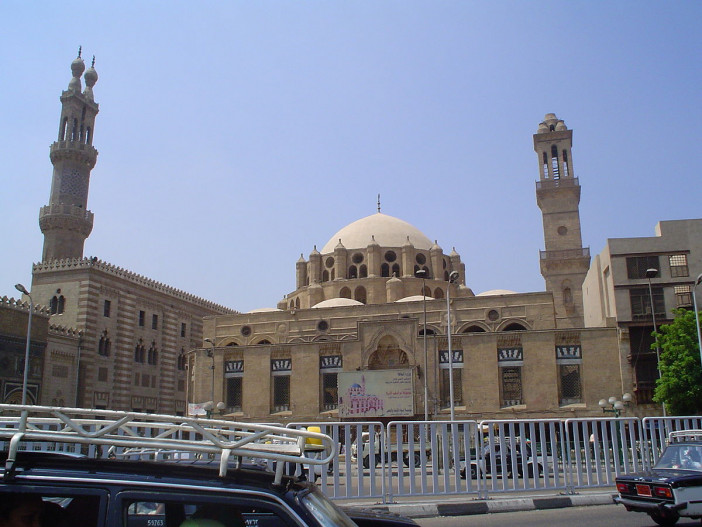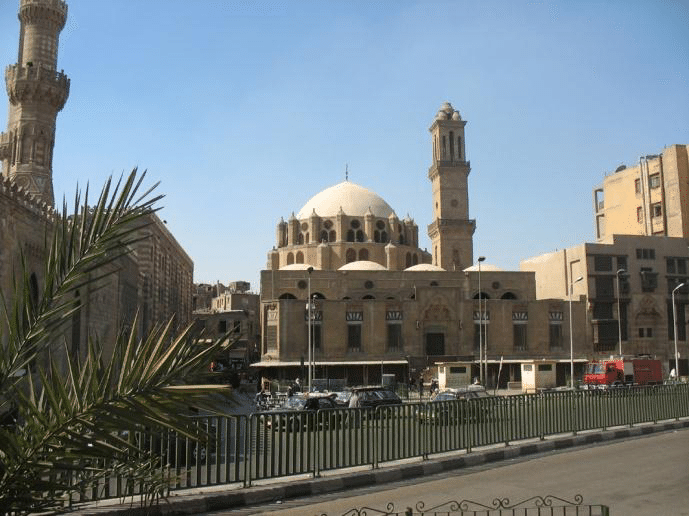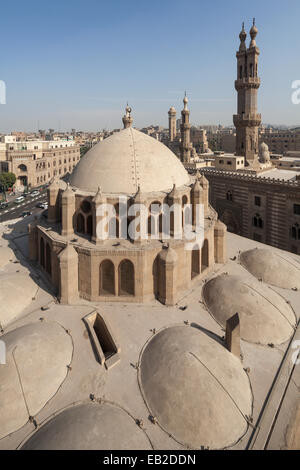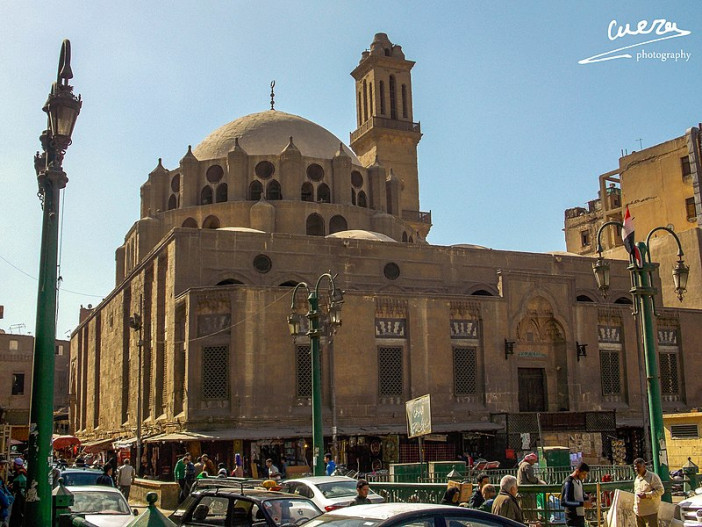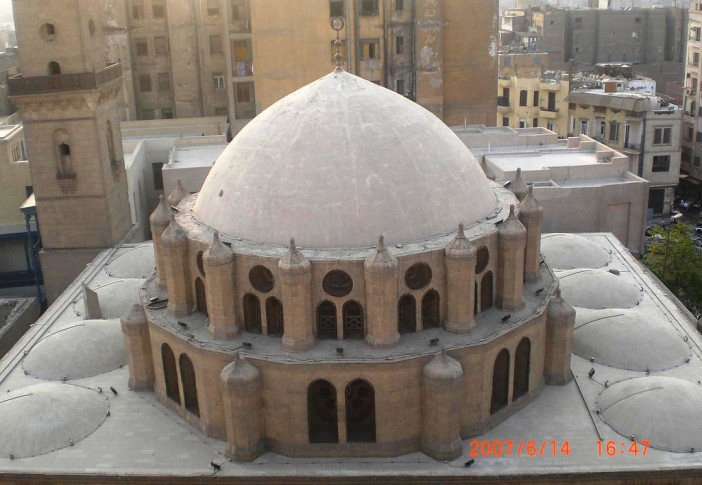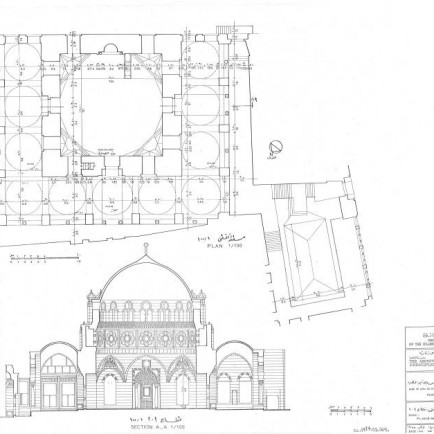The Mosque of Abu al-Dhahab
History
The mosque was built in 1774 by Muhammad Bey Abu al-Dhahab, who, along with his master 'Ali Bey al-Kabir, attempted to restore the Mamluk dynasty in Egypt between 1771 and 1772.
It boasts a prominent location between the Mamluk complex of al-Ghuri and the Fatimid Mosque of al-Azhar.
Urban and Architectural
The layout of the mosque is reminiscent of other Ottoman mosques, consisting of a rectangular prayer hall covered by a large dome, surrounded on three sides (all sides except the eastern qibla side) by an exterior portico covered by smaller domes. The portico, however, is preceded by an outer wall façade, shorter than the main building behind it, which demonstrates a more explicitly Mamluk style and has an ornate entrance portal. This façade features muqarnas decoration above its windows and in its portal, as well as ablaq paneling above the windows. The triangular arrangement of windows in the drum of the main dome of the mosque is also a Mamluk feature. The form of the mosque's minaret appears to have been inspired by the original minaret of the nearby al-Ghuri complex (from the early 16th century) which had a quadruple lantern summit. The mosque was also built above a ground-level row of shops which provided it with an additional source of revenue (a feature shared with other raised or "hanging" mosques in Cairo's history). enclosure around the mosque which is angled at a slightly different orientation than the mosque itself because it was aligned with the original street
Description
The mosque is located near the Al-Azhar Mosque in the middle of medieval Cairo.Although it has many Mamluk influences, it is architecturally very similar to the Mosque earlier of Sinan Pasha and is a notable example of local Ottoman architecture in the city.
References
https://www.archnet.org/sites/2343
http://www.touregypt.net/featurestories/abudahabmosque.htm
Details
Location
24 جامع الازهر، الدرب الأحمر، محافظة القاهرة، 11311, Égypte
Worshippers
600
Area
1200
Drawings
Map
History
The mosque was built in 1774 by Muhammad Bey Abu al-Dhahab, who, along with his master 'Ali Bey al-Kabir, attempted to restore the Mamluk dynasty in Egypt between 1771 and 1772.
It boasts a prominent location between the Mamluk complex of al-Ghuri and the Fatimid Mosque of al-Azhar.
Urban and Architectural
The layout of the mosque is reminiscent of other Ottoman mosques, consisting of a rectangular prayer hall covered by a large dome, surrounded on three sides (all sides except the eastern qibla side) by an exterior portico covered by smaller domes. The portico, however, is preceded by an outer wall façade, shorter than the main building behind it, which demonstrates a more explicitly Mamluk style and has an ornate entrance portal. This façade features muqarnas decoration above its windows and in its portal, as well as ablaq paneling above the windows. The triangular arrangement of windows in the drum of the main dome of the mosque is also a Mamluk feature. The form of the mosque's minaret appears to have been inspired by the original minaret of the nearby al-Ghuri complex (from the early 16th century) which had a quadruple lantern summit. The mosque was also built above a ground-level row of shops which provided it with an additional source of revenue (a feature shared with other raised or "hanging" mosques in Cairo's history). enclosure around the mosque which is angled at a slightly different orientation than the mosque itself because it was aligned with the original street
Description
The mosque is located near the Al-Azhar Mosque in the middle of medieval Cairo.Although it has many Mamluk influences, it is architecturally very similar to the Mosque earlier of Sinan Pasha and is a notable example of local Ottoman architecture in the city.


